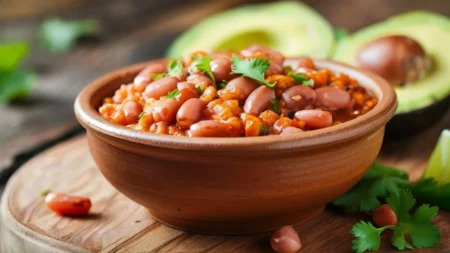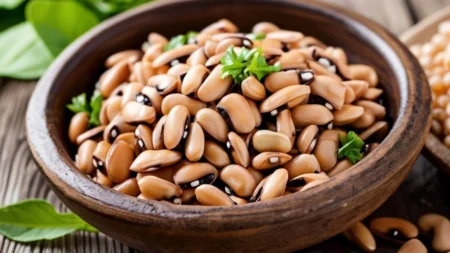Achieving sustainable weight management is a journey that requires a comprehensive approach tailored to your unique needs. This guide aims to provide you with proven strategies to understand your body composition and metabolism, implement effective calorie tracking and portion control, create a balanced diet plan, incorporate regular physical activity, and develop long-term healthy lifestyle changes. Along the way, you’ll discover the invaluable role of support groups, accountability, and celebrating non-scale victories as you strive towards a healthier, more fulfilling you.
Key Takeaways
- Understand the importance of knowing your body composition and metabolic rate to develop an effective weight management plan.
- Implement accurate calorie tracking and portion control techniques to maintain a healthy calorie balance.
- Explore a balanced diet plan focused on nutrient-dense foods to support your weight management goals.
- Incorporate regular physical activity, including cardiovascular exercise and strength training, to boost your metabolism and overall fitness.
- Prioritize sustainable lifestyle changes, such as developing healthy eating habits and addressing factors like stress management and sleep quality.
Defining Weight Management
Achieving and maintaining a healthy weight is essential for your well-being, with over half of all US adults facing obesity or overweight issues. This condition leads to serious health problems including heart disease, diabetes, and even certain types of cancer [1]. The traditional measure of overweight, the Body Mass Index (BMI), while useful, does not always accurately reflect a person’s health status due to its inability to differentiate between muscle and fat mass [1]. Additionally, waist circumference measurements provide another metric for assessing the need to lose weight, with recommended limits set at under 35 inches for women and 40 inches for men [1].
The Difference Between Weight Loss and Weight Management
Weight management is a broad term that encompasses both the loss of body weight and the ongoing management of an individual’s body weight, which might include gaining weight for some individuals. The diet and food intake play a crucial role in how one manages their weight [40]. Unlike the acute act of losing weight, weight management treats obesity as a chronic disease, acknowledging the need not only for weight loss and its maintenance but also for addressing the comorbid conditions associated with obesity, of which there are known to be 236 [40]. The challenge of sustaining weight loss is compounded when individuals are on medications that cause weight gain, though often there are weight-neutral alternatives. Weight management, therefore, involves treating the whole person, including conditions like diabetes, hypertension, and high cholesterol, not just their body weight [40].
A quick resume on a table
| Aspect | Weight Loss | Weight Management |
|---|---|---|
| Scope | Focus on losing body weight. | Encompasses losing, maintaining, or gaining weight. |
| Approach | Acute act of losing weight. | Treats obesity as a chronic disease. |
| Health Conditions Addressed | Mainly focused on weight. | Includes comorbid conditions like diabetes, hypertension, high cholesterol. |
| Medication Influence | Weight gain due to medication is a challenge. | Weight-neutral alternatives are often available. |
The Role of Metabolism in Weight Management
Metabolism is a complex network of enzymes and metabolites that play a vital role in life activities and is essential for maintaining a healthy life. This depends on lifestyle, energy intake, and expenditure. A balanced lifestyle that includes healthy eating habits, exercise, a regulated sleep cycle, and behavioral aspects is critical for maintaining a healthy body weight and robust metabolism [43]. After weight loss, maintaining a healthy body weight requires a balance between energy input and output to regulate optimal metabolism. This involves a complex regulation of enzyme activities, ATP synthesis and utilization, hormonal functions, and neurological and muscular activities [43]. Exercise not only aids in calorie restriction but also boosts metabolism by building lean muscle mass, which increases the metabolic rate to utilize more energy in maintaining it [43]. From a clinical perspective, addressing metabolic derangements caused by genetic predispositions, lifestyle, behavior, and medication or illness is imperative for maintaining a healthy weight and overcoming conditions like obesity and its associated comorbidities [43].
Metabolism, defined as the series of chemical reactions that create and break down energy necessary for life, significantly influences the rate at which your body expends energy or burns calories. Our bodies burn calories through the basal metabolic rate (BMR), everyday activities, and exercise. Although metabolism is partly genetic and largely outside one’s control, the reality is that for most people, the balance of calories in versus calories out has a strong influence on changes in weight over a lifetime [45]. Lean individuals tend to be more active in their everyday activities, possibly due to genetic programming or learned behaviors, which can significantly impact the total calories burned each day. Conversely, obese individuals expend more calories during activities due to the increased effort required to move around but are often more sedentary, complicating efforts to lose body fat [45]. Regardless of metabolic rate, our bodies are designed to store excess energy in fat cells. Thus, managing energy intake and output is crucial for weight management, with physical activity playing a key role in controlling how many calories are burned each day [44].
A quick resume on a table
| Concept | Details |
|---|---|
| Definition | Series of chemical reactions creating and breaking down energy necessary for life. |
| Factors Affecting Metabolism | Lifestyle, energy intake, energy expenditure. |
| Importance of Balance | Balance between energy input and output regulates optimal metabolism. |
| Role of Exercise | Builds lean muscle mass, boosts metabolic rate. |
| Clinical Perspective | Address metabolic derangements due to genetics, lifestyle, behavior, medication, or illness. |
The Impact of Obesity and Overweight on Health
The health implications of being overweight or obese are far-reaching. Individuals with excess body weight are at a higher risk of developing serious health issues such as heart disease, high blood pressure, type 2 diabetes, gallstones, breathing problems, and certain cancers [2]. Obesity not only shortens life expectancy by up to a decade but also contributes to a lower quality of life due to joint pain, gallbladder issues, and other health concerns [1]. Moreover, obesity is a leading cause of preventable death in the US, with millions of Americans suffering from weight-related diseases annually [1].
The Role of a Balanced Diet and Physical Activity in weight management
A balanced diet and regular physical activity are pivotal in managing weight effectively. Nutrition plays a crucial role, with healthcare professionals often advising on dietary modifications to improve health outcomes [1]. Combining a healthy diet with regular exercise augments the impact on weight management. Safe and accessible forms of physical activity, such as walking, swimming, and stationary cycling, are recommended for those new to exercise [1].
Maintaining a healthy weight is crucial for overall health, helping to prevent and control many diseases and conditions associated with being overweight or obese [2]. The concept of energy balance—calories consumed versus calories expended—underscores the importance of both diet and physical activity in achieving weight management goals. To maintain a healthy weight over time, it’s not necessary for energy intake and output to balance exactly every day, but rather to achieve balance over the long term [2].
Incorporating a healthy diet, reducing daily calorie intake if overweight or obese, engaging in physical activity, and limiting sedentary time are key strategies for reaching and maintaining a healthy weight [2]. This multifaceted approach not only aids in weight loss but also in the prevention of weight gain, contributing to long-term health and well-being [2].
A quick resume on a table
| Aspect | Details |
|---|---|
| Importance | Crucial for overall health, prevents and controls diseases and conditions associated with overweight. |
| Energy Balance Concept | Calories consumed vs. calories expended, critical for achieving weight management goals. |
| Key Strategies | Healthy diet, reduced daily calorie intake, regular physical activity, limiting sedentary time. |
| Long-term Approach | Energy intake and output balance over the long term, not necessarily daily. |
Understanding Your Body Composition and Metabolism
Unlocking the secrets to effective weight management begins with understanding your body composition and metabolic rate. By delving into these fundamental aspects of your physiology, you can develop a personalized plan that caters to your unique needs and helps you achieve sustainable results.
Importance of Knowing Your Body Fat Percentage
Tracking your body fat percentage is crucial for gaining valuable insights into your overall health and fitness level. Unlike the often-misleading body mass index (BMI), your body fat percentage provides a more accurate representation of your body composition, revealing the ratio of fat mass to lean muscle mass. This information can help you assess your current fitness status, identify areas for improvement, and set targeted goals for fat loss or muscle building.
Factors That Influence Your Metabolic Rate
Your metabolic rate, or the amount of energy your body uses to perform daily functions, is influenced by a variety of factors. Age, gender, genetics, muscle mass, and physical activity level all play a significant role in determining your basal metabolic rate (BMR) – the minimum amount of calories your body needs to function at rest. Understanding these factors can empower you to make informed decisions about your diet, exercise routine, and lifestyle choices to optimize your metabolic efficiency.
By diving deeper into the intricacies of your body composition and metabolism, you can gain the insights needed to develop a personalized weight management plan that aligns with your specific physiological needs. This holistic approach will set you up for long-term success on your journey to a healthier, more vibrant you.
Strategies for Effective Weight Management
Setting Realistic and Achievable Goals
Setting and tracking your goals are essential steps in your weight management journey. Research supports goal setting as a way to prepare for success, with the CDC recommending a steady and gradual weight loss for long-term maintenance [10]. Aiming for 1 to 2 pounds per week or 4 to 8 pounds per month is considered healthy and sustainable. Making your goals specific, such as walking 30 minutes daily, five times a week, can help you stay on track and motivated, even when faced with setbacks [10] [11].
Incorporating a Balanced, Nutrient-Rich Diet
Eating nutrient-rich foods supports overall health and aids in weight management. Foods like lean protein, legumes, and a variety of fruits and vegetables can help you feel full and satisfied without consuming too many calories [13]. Reducing the energy density of your diet by choosing foods that are less calorie-dense allows you to enjoy satisfying portions while still managing your calorie intake effectively. This strategy is flexible and can accommodate various dietary patterns and preferences [14] [15].
Regular Physical Activity and Its Benefits
Combining exercise with a healthy diet is more effective for weight loss than relying on calorie restriction alone. Regular physical activity, including aerobic exercises like walking, swimming, and cycling, can prevent or reverse the effects of certain diseases. It’s recommended to engage in aerobic exercise at least three times a week for a minimum of 20 minutes per session, with more time being beneficial for weight loss. Incorporating higher intensity exercises and strength training can also help maintain and increase lean body mass, further boosting your metabolism [16].
The Importance of Stress Management and Adequate Sleep in weight management
Managing stress and ensuring adequate sleep are crucial components of effective weight management. High stress levels and lack of sleep can lead to increased cortisol levels, which may cause weight gain and make it harder to lose weight. Techniques like diaphragmatic breathing, progressive muscle relaxation, and guided visualization, combined with healthy nutrition, can significantly reduce BMI and improve mental health [19]. Adequate sleep, defined as six to eight hours per night, increases the chances of successful weight loss, while stress reduction helps in maintaining a healthy weight [20] [21].
In summary, effective weight management is a multifaceted approach that requires setting realistic goals, eating a balanced diet, engaging in regular physical activity, and managing stress and sleep. By incorporating these strategies, you can work towards achieving and maintaining a healthy weight, thereby improving your overall well-being.
Monitoring Progress and Making Adjustments
Monitoring your progress is essential for understanding the effectiveness of your weight management strategies. Scale weight, while useful, does not provide a complete picture of your health. Tracking your body fat percentage offers a clearer insight into your progress, as it’s possible to slim down without a change in scale weight by losing fat and gaining muscle [61]. Self-monitoring, which includes observing and recording eating and exercise patterns, increases self-awareness and serves as an early warning system for potential problems. Keeping a food log and recording everything you consume immediately can provide an accurate account of your intake and help balance calories consumed with those expended [62]. Additionally, self-monitoring your physical activity, through methods such as exercise logs or using pedometers to track steps, can motivate you to incorporate more exercise into your daily routine [62]. Remember, self-monitoring is described as the cornerstone of behavioral treatment for weight loss, and its effectiveness in facilitating behavior change and weight management has been supported by empirical literature [63].
Calorie Tracking and Portion Control in weight management
Implementing effective calorie tracking and portion control techniques can significantly contribute to your weight management goals. Utilizing tools like food journals, nutrition apps, and serving size guides can help you accurately monitor your calorie intake.
Tools for Accurate Calorie Counting
Keeping a detailed food journal or utilizing a user-friendly nutrition app can provide you with valuable insights into your daily calorie consumption. These tools enable you to track the portion sizes and serving sizes of the foods you consume, allowing you to make more informed decisions about your calorie intake.
Strategies for Mindful Eating and Portion Control
Developing strategies for mindful eating can also help you maintain healthy portion sizes and make more nutritious choices. By paying attention to your hunger cues and avoiding emotional eating, you can learn to better regulate your calorie intake and achieve your weight management goals.
Remember, a balanced approach to calorie tracking and portion control can be a powerful tool in your weight management journey, empowering you to make informed decisions and cultivate sustainable dietary habits.
The Role of Diet in Weight Management
Creating a Balanced Diet
To embark on a successful weight management journey, it’s essential to focus on consuming foods and drinks that provide good nutrition, keeping your body healthy [70]. Understanding your body’s daily caloric needs is a crucial first step, which varies based on age, sex, size, activity level, and any medical conditions you may have [70]. A balanced diet involves not only avoiding excessive consumption of certain foods but also ensuring you get enough of others [70]. It’s recommended to stock up on healthy foods such as fresh produce, lean proteins, low-fat dairy, and whole grains, while limiting foods high in sugar, fat, and calories, known as “empty calories” [70]. Aim to fill half of your plate with fruits and vegetables at every meal, and choose different healthy foods from each food group [70].
Understanding Caloric Intake vs. Expenditure
The concept of energy balance is pivotal in weight management, highlighting the relationship between energy intake (calories consumed) and energy expenditure (calories burned) [68]. Consuming more calories than you expend results in energy storage, primarily as body fat, while burning more calories than you consume leads to weight loss [68]. Caloric intake is influenced by various factors including age, sex, and energy expenditure, among others [68]. It’s essential to know how many calories you consume and burn daily to construct an effective weight loss plan, aiming to create a caloric deficit by burning more calories than consumed [67]. Even without physical activity, the body expends calories through vital functions, but exercise can significantly boost the amount of calories burned [67].
Incorporating Healthy Eating Habits
Adopting a healthy eating plan that you can maintain over time is key to losing weight and keeping it off [71]. The 2020–2025 Dietary Guidelines for Americans recommend a diet that includes vegetables of all types, fruits, whole grains, low-fat dairy, and protein from various sources [71]. It’s also advised to limit added sugars, saturated fat, and sodium [71]. Regular physical activity complements a healthy diet by helping to use more calories and maintain weight loss [71]. Making healthy food choices and following a healthy eating plan should become a lifelong habit, and finding healthy food options that you enjoy will make you more likely to stick with your eating plan [71]. Regular physical activity not only aids in weight loss but also helps prevent weight regain [71].
Creating a Balanced Diet Plan for Weight Management
Designing a well-balanced diet plan is crucial for successful weight management. By focusing on incorporating nutrient-dense foods, you can nourish your body while controlling your calorie intake. These nutrient-dense options, rich in essential vitamins, minerals, and fiber, can help you feel satisfied and support your overall health.
Nutrient-Dense Foods for Weight Management
When building a weight management diet, prioritize the inclusion of whole, unprocessed foods that are high in macronutrients (proteins, carbohydrates, and healthy fats) and micronutrients (vitamins and minerals). Some examples of nutrient-dense foods to incorporate into your diet include:
- Lean proteins: Chicken, turkey, fish, eggs, legumes, and tofu
- Complex carbohydrates: Whole grains, brown rice, quinoa, oats, and sweet potatoes
- Healthy fats: Avocado, nuts, seeds, olive oil, and fatty fish
- Fruits and vegetables: A wide variety of colorful produce to ensure you’re getting a range of essential nutrients
Meal Planning and Meal Prepping Tips
To create a sustainable weight management diet, incorporate meal planning and meal prepping into your routine. This can help you maintain a calorie deficit, control your portion sizes, and ensure you’re consuming a balanced mix of macronutrients and micronutrients. Consider the following strategies:
- Plan your meals in advance, making use of healthy recipes that align with your dietary preferences and weight goals.
- Prepare larger portions of nutrient-dense foods that you can easily portion out and reheat throughout the week.
- Invest in meal prep containers and tools to make the process more efficient and organized.
- Experiment with meal prepping techniques, such as batch cooking, freezing portions, and creating salad or grain bowls.
By incorporating these strategies into your lifestyle, you can create a well-balanced diet plan that supports your weight management goals and long-term health.
The Importance of Physical Activity
Physical activity plays a crucial role in managing and maintaining a healthy weight, alongside offering numerous health benefits including improved cardiovascular fitness, insulin sensitivity, and mental health [75][76]. Engaging in regular physical activity can help you stay at a healthy weight or even lose weight, while also lowering the risk of various diseases such as heart disease, diabetes, and certain cancers [78].
Different Types of Exercises for Weight Management
When considering weight management, incorporating a variety of exercises can be beneficial. Walking, for instance, is an accessible starting point for many, requiring no special equipment and offering a lower impact on joints [74]. For those looking to ramp up their activity, jumping rope, high-intensity interval training (HIIT), cycling, and swimming provide more vigorous workout options that can significantly boost calorie burn [73]. Strength training, while not always directly associated with high calorie burn, builds muscle mass which in turn increases energy expenditure even at rest [74]. Other activities like Pilates and yoga, though lower in calorie burn, can improve flexibility and muscle tone, contributing to a well-rounded fitness regimen [73].
How Regular Activity Affects Weight
Regular physical activity increases total energy expenditure, which can help maintain energy balance or create a calorie deficit necessary for weight loss [78]. It’s important to note, however, that exercise’s effectiveness for weight loss can be influenced by dietary habits. Exercise alone, especially at moderate levels, may result in minimal weight loss, but when combined with a lower-calorie eating plan, it can significantly promote weight loss [75][76]. Vigorous activities have been shown to be more effective for weight control compared to slower, less intense exercises. For example, activities like bicycling and brisk walking have helped individuals avoid weight gain, whereas slow walking has not shown the same benefits [78].
Overcoming Barriers to Staying Active
Despite the clear benefits of physical activity, many face barriers to staying active, such as lack of time, motivation, or access to resources [80]. Identifying personal barriers and developing strategies to overcome them is essential. For those pressed for time, finding creative ways to integrate activity into daily routines, like walking during phone calls or scheduling walking meetings, can be effective [80]. Sharing fitness goals with friends and family can also garner support and even companionship for physical activities, making them more enjoyable and sustainable [80]. Additionally, choosing exercises that require minimal equipment or taking advantage of free online workout resources can alleviate concerns over costs or lack of facilities [80]. It’s also beneficial to start slow and choose activities that match one’s fitness level to avoid feeling overwhelmed or uncomfortable [80].
In conclusion, physical activity is indispensable for weight management and overall health. By incorporating a variety of exercises tailored to individual preferences and overcoming common barriers to regular activity, one can significantly enhance their weight management efforts and enjoy the myriad health benefits that come with an active lifestyle.
Conclusion
In your journey towards effective weight management and a healthier lifestyle, the strategies and insights presented in this guide have provided a comprehensive framework. By understanding your body composition and metabolism, implementing calorie tracking and portion control, and creating a balanced diet plan, you have the tools to embark on a path of sustainable changes.
Incorporating regular physical activity and adopting lifestyle changes tailored to your unique needs are crucial steps in achieving your weight management goals and maintaining a balanced, healthy lifestyle. Remember to celebrate your non-scale victories, prioritize your overall well-being, and surround yourself with a supportive community to stay motivated and accountable throughout your journey.
With a personalized, holistic approach, you can unlock the keys to long-term weight management success and cultivate a lifestyle that nourishes your physical, mental, and emotional well-being. Embrace the process, celebrate your progress, and embrace the transformative power of sustainable lifestyle changes that will positively impact your overall well-being.
FAQ
What is the importance of knowing your body composition and metabolic rate?
Knowing your body composition and metabolic rate is crucial for effective weight management. Understanding your body fat percentage can provide valuable insights into your overall health and fitness level. Factors that influence your metabolic rate include age, gender, genetics, muscle mass, and physical activity level. Evaluating these elements can help you develop a personalized weight management plan that accounts for your unique physiological needs.
How can calorie tracking and portion control help with weight management?
Implementing effective calorie tracking and portion control techniques can significantly contribute to your weight management goals. Utilize tools like food journals, nutrition apps, and serving size guides to accurately monitor your calorie intake. Develop strategies for mindful eating, such as paying attention to hunger cues and avoiding emotional eating, to help you maintain healthy portion sizes and make more nutritious choices.
What are the key components of a balanced diet plan for weight management?
Designing a balanced diet plan is essential for successful weight management. Focus on incorporating nutrient-dense foods that are high in essential vitamins, minerals, and fiber, while controlling your calorie intake. Meal planning and meal prepping can help you create a sustainable eating routine that aligns with your weight goals and dietary preferences.
How can regular physical activity support weight management?
Regular physical activity is a crucial component of a comprehensive weight management strategy. Engaging in cardiovascular exercise, such as brisk walking, jogging, or swimming, can help you burn calories and improve your cardiovascular health. Incorporating strength training exercises can also support muscle building, which can boost your metabolic rate and aid in weight loss.
What are some key lifestyle changes that can contribute to long-term weight management?
Achieving long-term weight management often requires adopting sustainable lifestyle changes. Developing healthy eating habits, such as mindful eating, meal planning, and portion control, can help you maintain a balanced diet. Additionally, addressing factors like stress management, sleep quality, and hydration can contribute to your overall well-being and support your weight management efforts.
How can support groups and accountability partners help with weight management?
Engaging with support groups and finding accountability partners can be tremendously helpful in your weight management journey. Connecting with a supportive community, whether in-person or online, can provide encouragement, share experiences, and offer practical tips. Accountability partners can also help you stay on track and maintain better adherence to your weight management plan.
What are some examples of non-scale victories to celebrate during weight management?
As you progress on your weight management journey, it’s important to celebrate non-scale victories that go beyond just the number on the scale. Focus on improvements in your overall health and well-being, such as increased energy, better sleep, improved fitness, and enhanced self-confidence. Embracing a body-positive mindset and practicing self-care can help you maintain a healthy, sustainable lifestyle.
What are the top strategies for effective weight management?
To manage weight effectively, consider these proven strategies:
- Diversify your diet with a range of colorful, nutrient-rich foods.
- Maintain a diary to track your food intake and weight changes.
- Commit to regular physical activities and exercises.
- Avoid drinks that are high in calories.
- Be mindful of serving sizes and portion control.
- Practice mindful eating to improve your relationship with food.
- Control your environment to avoid unnecessary temptations.
- Always plan your meals and snacks in advance.
Can you explain the 30-30-30 rule for weight loss?
The 30-30-30 rule is a simple weight loss strategy that involves consuming 30 grams of protein within 30 minutes of waking up and then engaging in 30 minutes of low-intensity cardiovascular exercise. This method does not require significant changes to your diet, calorie counting, or restrictions on other meals.
What is the most effective method for weight control?
Effective weight control can be achieved by:
- Limiting portion sizes to manage calorie intake efficiently.
- Increasing physical activity to the highest possible level for your lifestyle.
- Opting for healthier food alternatives.
- Drinking plenty of water and avoiding sugary beverages.
- Setting achievable and specific goals, such as incorporating short walks into your weekly routine.
What is considered the best approach to weight loss?
One of the most effective approaches to losing weight is engaging in consistent aerobic exercises, like brisk walking, for a minimum of 30 minutes on most days. Depending on individual weight loss goals and maintenance needs, some might need to increase their physical activity beyond this recommendation. Incorporating any additional movement into your routine can also contribute to calorie burning and weight loss.
References
[1] – https://southsidemedical.net/what-is-weight-management-and-why-is-it-important/
[2] – https://www.nhlbi.nih.gov/health/educational/lose_wt/index.htm
[3] – https://medicaltransformationcenter.com/blog/why-is-weight-management-important/
[4] – https://www.niddk.nih.gov/health-information/weight-management/adult-overweight-obesity/health-risks
[5] – https://www.who.int/news-room/questions-and-answers/item/obesity-health-consequences-of-being-overweight
[6] – https://www.cdc.gov/obesity/basics/consequences.html
[7] – https://www.ncbi.nlm.nih.gov/pmc/articles/PMC5556592/
[8] – https://www.healthline.com/health/exercise-and-weight-loss
[9] – https://reverehealth.com/live-better/role-exercise-weight-management/
[10] – https://www.healthline.com/health/weight-loss/setting-weight-loss-goals
[11] – https://www.mayoclinic.org/healthy-lifestyle/weight-loss/in-depth/weight-loss/art-20047752
[12] – https://www.verywellfit.com/how-to-set-weight-loss-goals-1231580
[13] – https://www.healthline.com/nutrition/most-weight-loss-friendly-foods
[14] – https://www.ncbi.nlm.nih.gov/pmc/articles/PMC5726407/
[15] – https://www.mayoclinic.org/healthy-lifestyle/weight-loss/in-depth/weight-loss/art-20044318
[16] – https://www.healthline.com/health/exercise-and-weight-loss
[17] – https://www.ncbi.nlm.nih.gov/pmc/articles/PMC5556592/
[18] – https://www.ncbi.nlm.nih.gov/pmc/articles/PMC3925973/
[19] – https://www.ncbi.nlm.nih.gov/pmc/articles/PMC6296480/
[20] – https://sleepeducation.org/sleep-more-stress-less-achieve-weight-loss-goals/
[21] – https://healthcare.utah.edu/weight-management/stress-weight-loss
[22] – https://www.mayoclinic.org/healthy-lifestyle/weight-loss/in-depth/weight-loss-plateau/art-20044615
[23] – https://www.healthline.com/nutrition/weight-loss-plateau
[24] – https://zoe.com/learn/weight-loss-plateau
[25] – https://www.rosemaryhealth.com.au/weight-loss-guides/strategies-to-manage-social-situations-without-derailing-your-weight-loss-goals
[26] – https://justinthomasmiller.com/navigating-social-events-while-losing-weight-practical-strategies/
[27] – https://www.ucsfhealth.org/education/behavior-modification-ideas-for-weight-management
[28] – https://www.ncbi.nlm.nih.gov/pmc/articles/PMC3312817/
[29] – https://www.healthline.com/nutrition/weight-loss-motivation-tips
[30] – https://drshawnhondorp.com/how-to-get-and-stay-motivated/
[31] – https://www.shape.com/weight-loss/management/women-share-weight-loss-stories
[32] – https://people.com/health/incredible-weight-loss-transformation-photos/
[33] – https://www.slimmingworld.co.uk/real-life-stories
[34] – https://pubmed.ncbi.nlm.nih.gov/16052189/
[35] – https://blog.profileplan.com/building-a-community-weight-loss
[36] – https://diet.mayoclinic.org/us/blog/2021/social-support-a-necessity-for-weight-loss/
[37] – https://www.ncbi.nlm.nih.gov/pmc/articles/PMC7326765/
[38] – https://med.stanford.edu/news/all-news/2021/02/digital-health-tracking-tools-help-individuals-lose-weight-study-finds.html
[39] – https://www.medicalnewstoday.com/articles/tracking-weight-loss-with-digital-health-tools-may-help-reduce-obesity
[40] – https://www.clinicalnutritioncenter.com/health-and-wellness/weight-loss-vs-weight-management
[41] – https://www.ncbi.nlm.nih.gov/books/NBK221839/
[42] – https://nutrition.org/weight-loss-and-weight-management/
[43] – https://www.ncbi.nlm.nih.gov/books/NBK572145/
[44] – https://www.mayoclinic.org/healthy-lifestyle/weight-loss/in-depth/metabolism/art-20046508
[45] – https://www.health.harvard.edu/does-metabolism-matter-in-weight-loss
[46] – https://www.webmd.com/diet/features/avoiding-quick-weight-loss-gimicks
[47] – https://www.webmd.com/obesity/features/5-weight-loss-myths
[48] – https://www.linkedin.com/pulse/myth-quick-fixes-build-maintainable-approach-fitness-chisom-obidike-3oyvf
[49] – https://www.niddk.nih.gov/health-information/weight-management/myths-nutrition-physical-activity
[50] – https://www.nm.org/healthbeat/healthy-tips/fitness/weight-loss-misconceptions
[51] – https://www.healthline.com/nutrition/top-12-biggest-myths-about-weight-loss
[52] – https://pubmed.ncbi.nlm.nih.gov/21178922/
[53] – https://www.mayoclinichealthsystem.org/hometown-health/speaking-of-health/does-exercise-help-you-lose-weight
[54] – https://www.vox.com/2016/4/28/11518804/weight-loss-exercise-myth-burn-calories
[55] – https://www.healthline.com/health/weight-loss/setting-weight-loss-goals
[56] – https://www.ncbi.nlm.nih.gov/pmc/articles/PMC5111772/
[57] – https://www.verywellfit.com/how-to-set-weight-loss-goals-1231580
[58] – https://imanitribe.com/blog/how-to-set-up-your-environment-for-weight-loss-success/
[59] – https://well-choices.com/creating-a-weight-loss-friendly-environment-at-home/
[60] – https://www.weightwatchers.com/templates/print.aspx?PageId=1064291&PrintFlag=yes&previewDate=6/7/2008
[61] – https://www.verywellfit.com/ways-to-track-weight-loss-progress-1231581
[62] – https://www.obesityaction.org/resources/self-monitoring-the-way-to-successful-weight-management/
[63] – https://www.ncbi.nlm.nih.gov/pmc/articles/PMC3268700/
[64] – https://www.nhs.uk/live-well/eat-well/how-to-eat-a-balanced-diet/eating-a-balanced-diet/
[65] – https://www.mayoclinic.org/healthy-lifestyle/weight-loss/in-depth/mayo-clinic-diet/art-20045460
[66] – https://www.healthline.com/nutrition/weight-loss-meal-plan
[67] – https://www.jordanfit.com/blog/2018/12/19/first-step-to-a-healthy-diet-and-weight-loss-measuring-your-calorie-intake-vs-expenditure
[68] – https://www.ncbi.nlm.nih.gov/books/NBK218769/
[69] – https://www.ncbi.nlm.nih.gov/pmc/articles/PMC5556592/
[70] – https://medlineplus.gov/ency/patientinstructions/000330.htm
[71] – https://www.niddk.nih.gov/health-information/weight-management/adult-overweight-obesity/eating-physical-activity
[72] – https://www.health.harvard.edu/topics/diet-and-weight-loss
[73] – https://www.webmd.com/fitness-exercise/ss/slideshow-exercises-weightloss
[74] – https://www.healthline.com/nutrition/best-exercise-for-weight-loss
[75] – https://www.ncbi.nlm.nih.gov/pmc/articles/PMC5556592/
[76] – https://www.ncbi.nlm.nih.gov/pmc/articles/PMC5556592/
[77] – https://pubmed.ncbi.nlm.nih.gov/30003901/
[78] – https://www.hsph.harvard.edu/obesity-prevention-source/obesity-causes/physical-activity-and-obesity/
[79] – https://www.nbcnews.com/better/health/how-overcome-common-obstacles-your-weight-loss-journey-ncna825311
[80] – https://www.heart.org/en/healthy-living/fitness/getting-active/breaking-down-barriers-to-fitness
[81] – https://www.saintlukeskc.org/health-library/weight-management-overcoming-your-barriers
[82] – https://www.ncbi.nlm.nih.gov/pmc/articles/PMC4214609/
[83] – https://www.vumc.org/health-wellness/resource-articles/feeding-your-feelings-how-emotions-affect-eating-habits
[84] – https://www.apa.org/news/press/releases/stress/2013/eating
[85] – https://www.clinicalnutritioncenter.com/health-and-wellness/positive-body-image-during-weight-loss
[86] – https://www.webmd.com/beauty/love_your_body_inside_and_out
[87] – https://www.everydayhealth.com/emotional-health/healthy-body-image-before-during-and-after-you-lose-weight/
[88] – https://www.ncbi.nlm.nih.gov/pmc/articles/PMC8522530/
[89] – https://www.ucsfhealth.org/education/behavior-modification-ideas-for-weight-management
[90] – https://www.ncbi.nlm.nih.gov/pmc/articles/PMC4772897/











